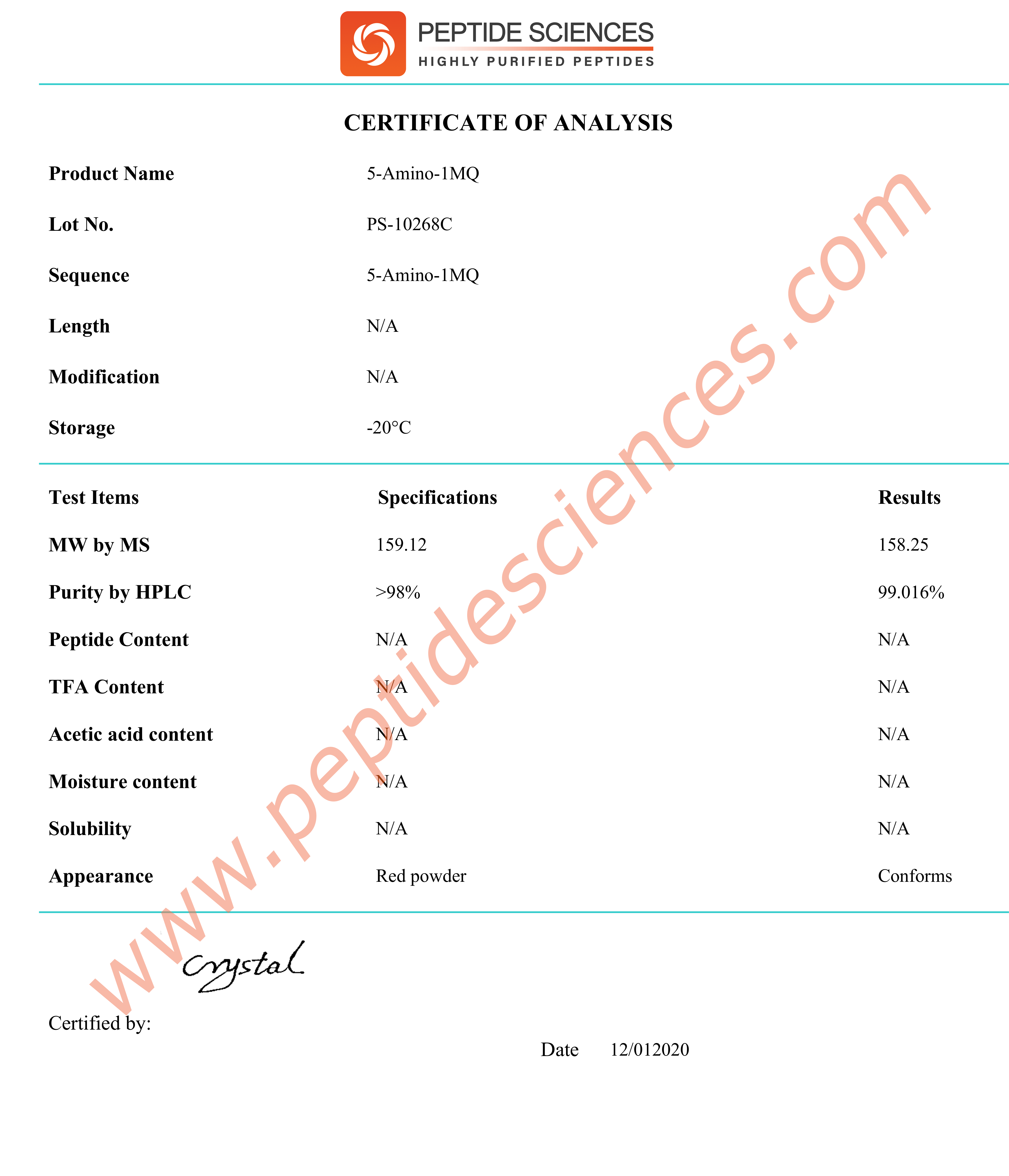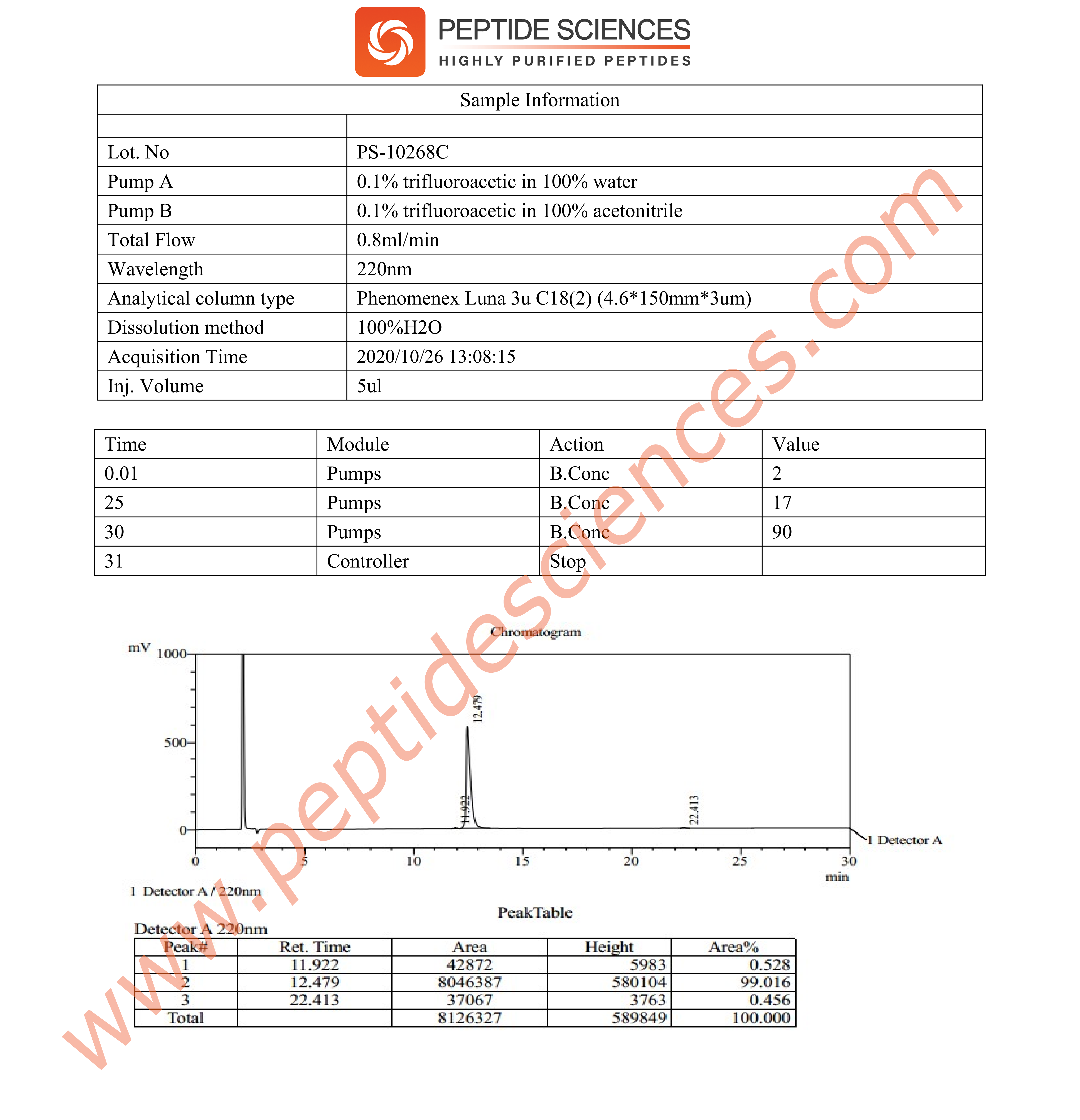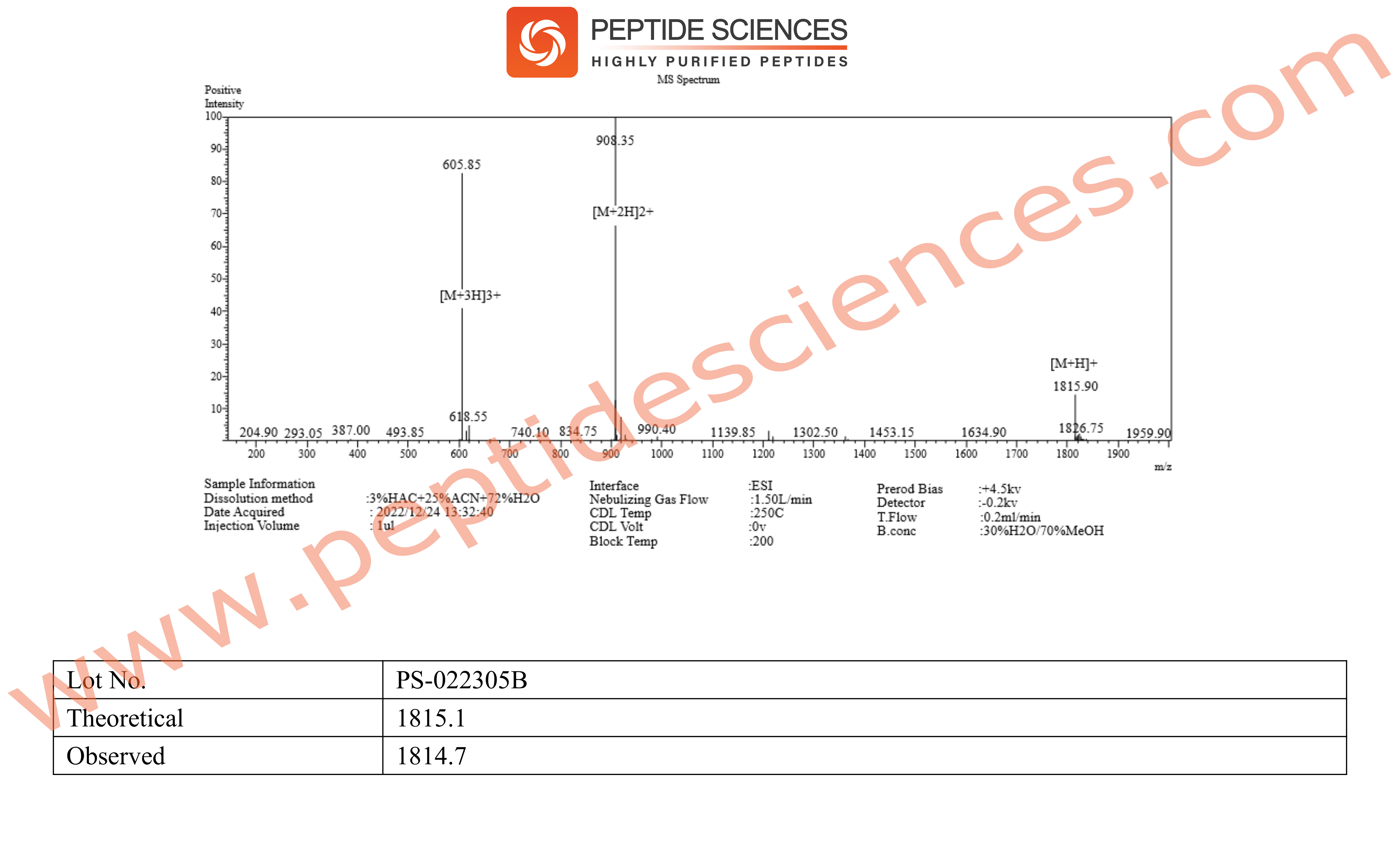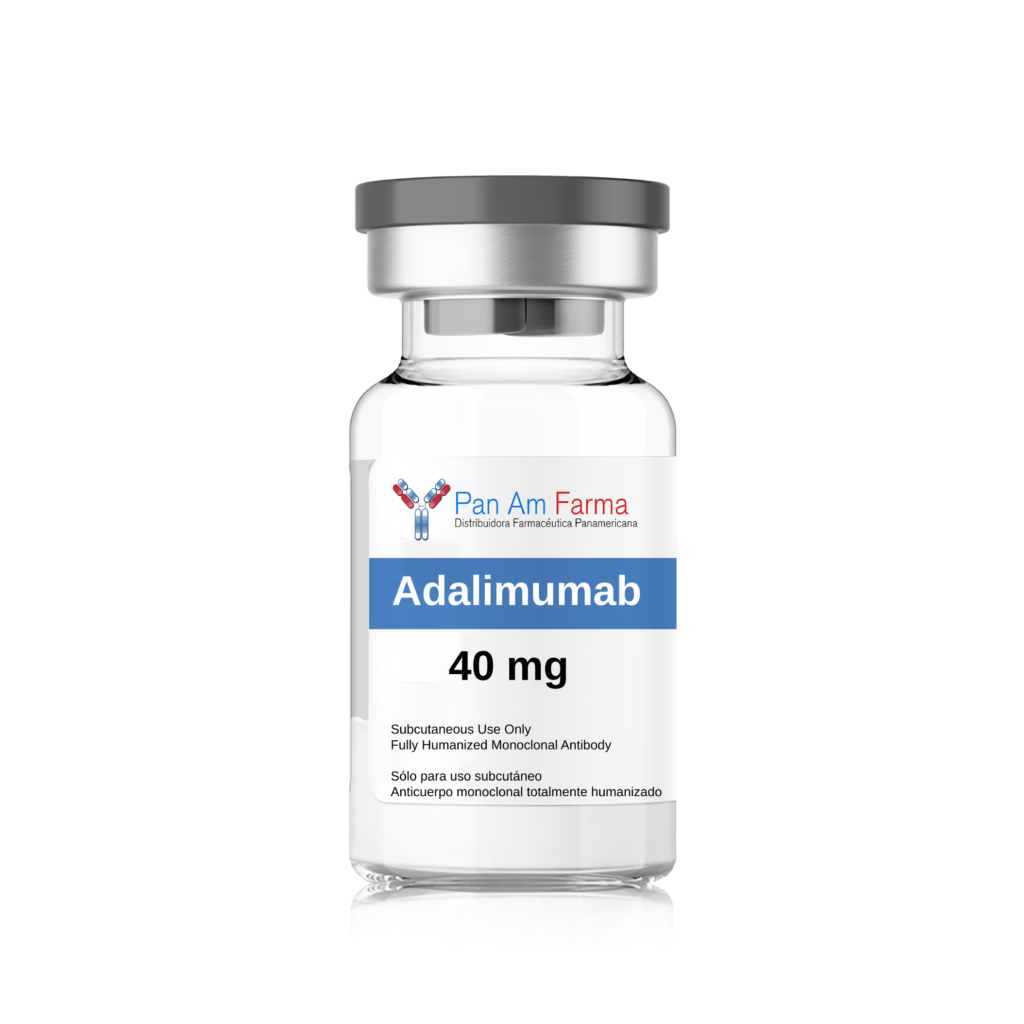Amino Acid Product
$ 250
Si Disponible: Dispensado al Día Siguiente
Envío Gratis
Dentro de México

Requiere Receta Médica
Este Medicamento requiere prescripción médica de su médico, clínica, hospital o terapeuta.
Tocilizumab se usa en adultos para tratar: artritis reumatoide moderada a grave despu?s de que se haya usado al menos otra medicina y no haya funcionado; arteritis de c?lulas gigantes (inflamaci?n en el revestimiento de los vasos sangu?neos que transportan sangre del coraz?n a otras partes del cuerpo); para frenar el deterioro de la funci?n pulmonar causado por esclerodermia con enfermedad pulmonar intersticial; y enfermedad por coronavirus 2019 (COVID-19) en personas hospitalizadas que reciben medicamentos con esteroides y requieren ox?geno suplementario, un ventilador o ECMO, por sus siglas en ingl?s (una m?quina de circulaci?n extracorp?rea que ayuda a aumentar el ox?geno en la sangre).
Description
-
5-Amino-1MQ Overview
5-amino-1MQ (5-amino-1methylquinolinium) an analogue of methylquinolinium, is a short peptide inhibitor of cytosolic nicotinamide N-methyltransferase (NNMT). The NNMT enzyme has been linked to both obesity and type 2 diabetes and is known to play a role in energy homeostasis within the cell. Inhibiting NNMT leads to significant weight loss, decreased fat mass and fat cell (adipocyte) size, and lower plasma cholesterol and glucose levels. 5-amino-1MQ and other methylquinolinium derivatives are under active investigation as potential treatments for obesity and diabetes. It also appears that inhibition of NNMT can activate stem cells and improve regenerative capacity in skeletal muscle.5-Amino-1MQ Structure
Molecular Formula:?C10H11N2 Molecular Weight:?159.21 g/mol PubChem CID:?950107 CAS Number:?42464-96-0 Synonyms:?5-amino-1-methylquinolinium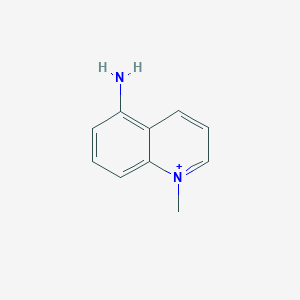
Source: PubChem
5-Amino-1MQ Research
Obesity
Nicotinamide N-methyltransferase is a cytosolic enzyme found in many cells throughout the body, but is most abundant in liver and fat cells. Research in mice shows that high levels of NNMT are associated with decreased levels of the sugar transporter GLUT4. GLUT4, which is primarily in striated muscle (skeletal and cardiac) and fat cells, is heavily linked to blood sugar levels and the development of diabetes. In rodent studies, mice that produce high levels of GLUT4 are insulin sensitive and relatively resistant to the development of type 2 diabetes while mice with low GLUT4 levels demonstrate profound insulin resistance. In fact, GLUT4 has been linked to basal metabolic rate and the concepts of fast and slow metabolism. Individuals with naturally high levels of GLUT4 have ?faster metabolism? than those with low levels of GLUT4 and burn more calories as a result. It is also true that production of the transporter is stimulated by exercise, explaining why exercise can help to combat weight loss, elevated blood sugar levels, and insulin resistance. As it turns out, GLUT4 and NNMT are closely linked to one another and to basal metabolism in mammals [1]. According to Dr. Barbara Kahn of Harvard Medical School, the connection between GLUT4 and NNMT is what first led to the investigation of the latter enzyme as a potential target in the treatment of diabetes and obesity. High levels of NNMT are often found in the fat cells of animals with insulin resistance. Manipulating this gene helps to counteract insulin resistance and thus diabetes. It also has a profound effect on weight and obesity. Human metabolism, and indeed all animal metabolism is highly efficient, making the most use out of a limited number of calories. Unfortunately, this very efficiency may be the mechanism underlying our penchants for obesity in the setting of excess calorie intake. Reducing the efficiency of human metabolism, causing the body to essentially waste calories, has long been a holy grail of medicine as it works to combat the growing obesity epidemic. NNMT and its interactions with GLUT4 may be the link that scientists have been searching for. [2], [3]. In the most basic sense, NNMT slows how quickly the body utilizes calories thereby leaving them available for storage in fat or glycogen. Decreased NNMT levels decrease the conversion of nicotinic acid (NA) into 1-methylnicotinamide (1-MNA). This process has two effects on metabolism as follows.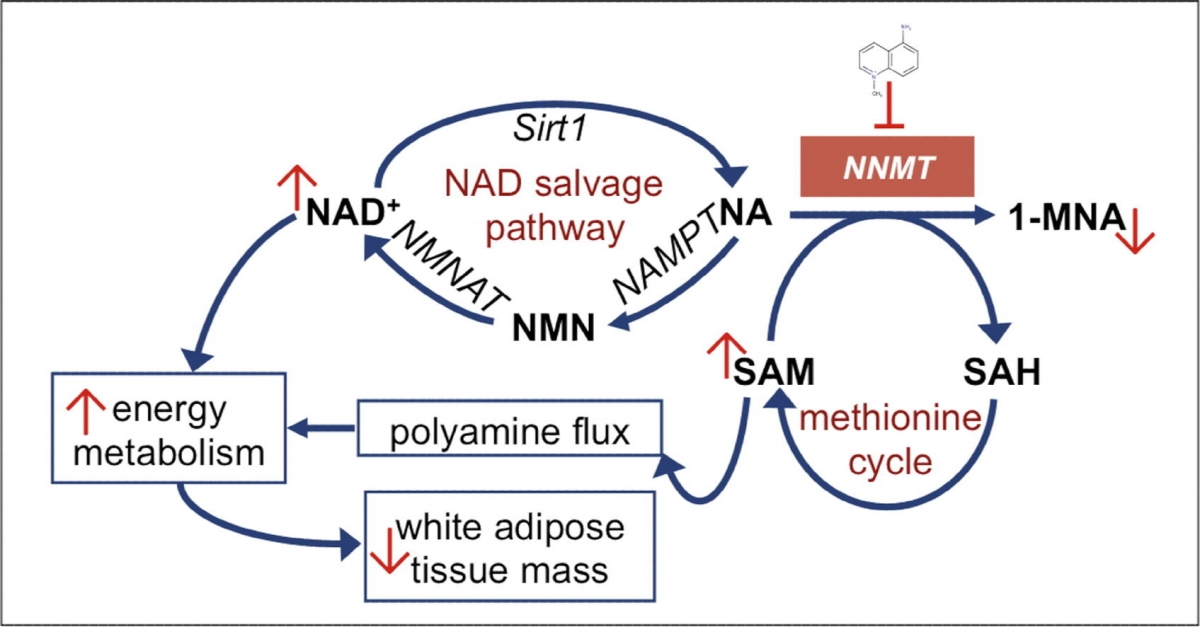
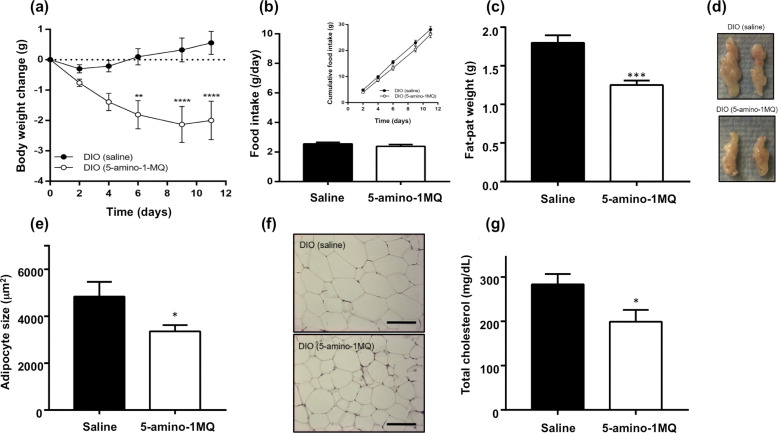
5-Amino-1MQ and Muscle Function
The impact of 5-amino-1MQ on skeletal muscle is multifaceted. Much like in adipose tissue, the presence of 5-amino-1MQ in muscle promotes the production of the GLUT4 receptor and boosts the inefficiency of metabolism leading to increased energy burn. Recent research in mice, however, suggests that inhibiting NNMT in any way, including with 5-amino-1MQ, may actually boost muscle repair by stimulating stem cells. Research in 24-month-old mice (old for mice) reveals that those treated with an NNMT inhibitor experience substantial stem cell activation in muscle tissue, following injury, compared to controls. These mice exhibit myofibers that are 2-fold larger in cross section and have greater contractile strength. In fact, mice treated with NNMT inhibitors have 70% more contractile force in healed muscle than control mice [7]. The benefits of boosting muscle stem cell production go well beyond simply accelerating rates of repair following injury. Stimulating stem cells could help elderly people maintain their independence for much longer. By improving mobility and reducing the risk of things like falls, NNMT inhibitors could substantially improve quality of life and levels of independent living among older adults. There is also evidence that increased NNMT expression is a common feature of muscle wasting disorders such as Duchenne Muscular Dystrophy and that reducing NNMT levels may help to alleviate the symptoms of some of these conditions [8]. This, again, is tied in to the ability of NNMT to inhibit stem cell growth and division. By reducing NNMT levels, compounds like 5-amino-1MQ may provide benefit in a variety of muscle-wasting conditions. The exact effects of NNMT inhibition on muscle function are not fully understood, but another component appears to relate to NAD+ levels. Recall that NNMT inhibition results in increased levels of NAD+. By replenishing NAD+ levels via NNMT inhibition, compounds like 5-amino-1MQ have been shown to improve muscle function, heart pathology, and DMD in animal models. It appears that improvement in mitochondrial function combined with decreases in inflammation and fibrosis, all related to increases in NAD+ levels, are the main drivers of these benefits [9].A Possible Role for 5-Amino-1MQ in Cognition
NAD+ is a critical compound in brain energy homeostasis. Depletion of NAD+ has been linked to a number of cognitive conditions, but is known to impact communication at the synaptic junction of neurons and at the neuromuscular junction where nerves connect to muscle tissue. Research in mice suggests that decreases in NAD+ levels can reduce synaptic transmission, impair muscle function, and impact overall cognitive function [10]. Though 5-amino-1MQ has not been specifically tested in this setting, there is good reason to believe that the compound will have the same effect on NAD+ levels in the brain as it has elsewhere. This means that it could be used not just as a treatment for cognitive dysfunction, but as a potential nootropic to boost cognitive function in the average individual. Whether this bears out in research remains to be seen, but there is active interest in the potential cognitive benefits of 5-amino-1MQ.NNMT and Cancer
There is significant research to suggest that NNMT expression is increased in gastric cancers of all types as well as pancreatic cancer, renal cell carcinoma, and bladder cancer. Mice without the NNMT gene so resistance to the development of these cancers, suggesting a causal role for NNMT. Though the research is still in progress, there is some speculation that inhibition NNMT may be a way to both treat and prevent certain types of cancer or, at the very least, reduce how aggressive certain cancer are[8]. It remains to be seen whether 5-amino-1MQ, by reducing NNMT function, will have any effect on the various cancers mentioned.5-Amino-1MQ Summary
5-amino-1MQ is a small, membrane permeable analogue of naturally occurring methylquinolinium. It has been shown, in animal models to inhibit expression of the enzyme nicotinamide N-methyltransferase. NNMT is an important component of cellular energy metabolism and has been linked heavily to weight control and insulin resistance. Studies show that inhibiting NNMT with 5-amino-1MQ can lead to weight reduction, resistance to diabetes, and improved plasma cholesterol levels. There is also good evidence to show that NNMT inhibition can help to regulate muscle and nerve cell function and there is some hope that compounds like 5-amino-1MQ may play a role in the treatment of conditions like muscular dystrophy and the muscle wasting that results from age. Reductions in levels of NNMT have been linked to reduced aggressiveness in several different varieties of cancer.Article Author
The above literature was researched, edited and organized by Dr. E. Logan, M.D. Dr. E. Logan holds a doctorate degree from Case Western Reserve University School of Medicine and a B.S. in molecular biology.Scientific Journal Author
Barbara B. Kahn is chief of the Division of Endocrinology, Diabetes, and Metabolism at Beth Israel Deaconess Medical Center (BIDMC) and the George Richards Minot Professor of Medicine at Harvard Medical School. She is an internationally recognized scientist in the area of obesity and type 2 diabetes, and her lab investigates the molecular mechanisms underlying these conditions, including the regulation of insulin action, food intake, and energy balance.?Kahn received BA and MD degrees from Stanford University and an MS from the University of California at Berkeley. After completing internal medicine training at the UC Davis Medical Center, she began her career in molecular research at the National Institutes of Health. Kahn has received numerous awards including the Outstanding Scientific Achievement Award from the American Diabetes Association; the H. C. Jacobaeus Prize from the Novo Nordisk Foundation and the Karolinska Institutet; the Charles H. Best Lectureship and Award from the University of Toronto; and the Gerald D. Aurbach Award Lecture from the Endocrine Society. Kahn was elected to the Institute of Medicine of the National Academies and is a fellow of the American Association for the Advancement of Science.
Barbara B. Kahn is being referenced as one of the leading scientists involved in the research and development of 5-Amino-1MQ. In no way is this doctor/scientist endorsing or advocating the purchase, sale, or use of this product for any reason. There is no affiliation or relationship, implied or otherwise, between Peptide Sciences and this doctor. The purpose of citing the doctor is to acknowledge, recognize, and credit the exhaustive research and development efforts conducted by the scientists studying this peptide.?Barbara B. Kahn?is listed in [2] and [6] under the referenced citations.Referenced Citations
- Y.-B. Kim et al., ?Muscle-Specific Deletion of the Glut4 Glucose Transporter Alters Multiple Regulatory Steps in Glycogen Metabolism,? Mol. Cell. Biol., vol. 25, no. 21, pp. 9713?9723, Nov. 2005, doi: 10.1128/MCB.25.21.9713-9723.2005.
- E. Carvalho, K. Kotani, O. D. Peroni, and B. B. Kahn, ?Adipose-specific overexpression of GLUT4 reverses insulin resistance and diabetes in mice lacking GLUT4 selectively in muscle,? Am. J. Physiol. Endocrinol. Metab., vol. 289, no. 4, pp. E551-561, Oct. 2005, doi: 10.1152/ajpendo.00116.2005.
- ?Weight loss without effort: NNMT inhibitors,? Recherche animale. https://www.recherche-animale.org/en/weight-loss-without-effort-nnmt-inhibitors (accessed Mar. 30, 2020).
- N. Minois, D. Carmona-Gutierrez, and F. Madeo, ?Polyamines in aging and disease,? Aging, vol. 3, no. 8, pp. 716?732, Aug. 2011.
- H. Neelakantan et al., ?Selective and membrane-permeable small molecule inhibitors of nicotinamide N-methyltransferase reverse high fat diet-induced obesity in mice,? Biochem. Pharmacol., vol. 147, pp. 141?152, Jan. 2018, doi: 10.1016/j.bcp.2017.11.007.
- P. M. Moraes-Vieira, A. Saghatelian, and B. B. Kahn, ?GLUT4 Expression in Adipocytes Regulates De Novo Lipogenesis and Levels of a Novel Class of Lipids With Antidiabetic and Anti-inflammatory Effects,? Diabetes, vol. 65, no. 7, pp. 1808?1815, Jul. 2016, doi: 10.2337/db16-0221.
- H. Neelakantan et al., ?Small molecule nicotinamide N-methyltransferase inhibitor activates senescent muscle stem cells and improves regenerative capacity of aged skeletal muscle,? Biochem. Pharmacol., vol. 163, Feb. 2019, doi: 10.1016/j.bcp.2019.02.008.
- P. Pissios, ?Nicotinamide N-methyltransferase: more than a vitamin B3 clearance enzyme,? Trends Endocrinol. Metab. TEM, vol. 28, no. 5, pp. 340?353, May 2017, doi: 10.1016/j.tem.2017.02.004.
- D. Ryu et al., ?NAD+ repletion improves muscle function in muscular dystrophy and counters global PARylation,? Sci. Transl. Med., vol. 8, no. 361, p. 361ra139, Oct. 2016, doi: 10.1126/scitranslmed.aaf5504.
- S. Lundt, N. Zhang, X. Wang, L. Polo-Parada, and S. Ding, ?The effect of NAMPT deletion in projection neurons on the function and structure of neuromuscular junction (NMJ) in mice,? Sci. Rep., vol. 10, Jan. 2020, doi: 10.1038/s41598-019-57085-4.
Related products
Emicizumab 60mg
$ 250Emicizumab
Clase:
Otros hemostáticos
DESCRIPCIÓN:
Anticuerpo monoclonal humanizado biespecífico dirigido al factor IXa y al factor X
Se utiliza para la profilaxis de rutina de episodios hemorrágicos en pacientes adultos y pediátricos con hemofilia A (deficiencia congénita del factor VIII) con o sin inhibidores del factor VIII.
Asociado con microangiopatía trombótica y eventos trombóticos cuando se usa con más de 100 unidades/kg/24 horas de concentrado de complejo de protrombina activado (aPCC)
Emicizumab 60mg
$ 250Durvalumab 120mg
$ 250Durvalumab
Clase:
Anticuerpos monoclonales antineoplásicos dirigidos a las vías de muerte programada 1 (PD-1) y ligando de muerte programada 1 (PD-L1)
DESCRIPCIÓN:
Anticuerpo monoclonal bloqueador del ligando 1 de muerte programada (PD-L1)
Se utiliza para ciertos tipos de NSCLC, SCLC y cáncer de vías biliares.
Se han informado reacciones inmunomediadas; Es posible que sea necesario suspender o suspender permanentemente el tratamiento.
Durvalumab 120mg
$ 250Benralizumab 30mg
$ 250Benralizumab
Clase:
Inmunoterapias para enfermedades reactivas y obstructivas de las vías respiratorias
Inhibidores de interleucina-5 (IL-5)
DESCRIPCIÓN:
Anticuerpo monoclonal humanizado subcutáneo dirigido contra la interleucina (IL)-5
Se utiliza para el tratamiento de mantenimiento complementario de pacientes adultos y pediátricos de 12 años o más que padecen asma grave con fenotipo eosinofílico.
Reduce las exacerbaciones graves del asma y, con el tratamiento de mantenimiento, puede permitir la reducción de la dosis de corticosteroides orales.
Benralizumab 30mg
$ 250Adalimumab 40mg
$ 250Adalimumab
Marca de Patente: HUMIRA
Clase:
Anticuerpos monoclonales antipsoriásicos y otros
Anticuerpos monoclonales antirreumáticos
Inhibidores alfa del factor de necrosis tumoral (TNF)
Cómo Suministrado:
-Frasco, Sólo para uso subcutáneo, 40 mg.
-Pluma, para solución de inyección subcutánea: 0,8 ml/40 mg
DESCRIPCIÓN:
Bloqueador del TNF-alfa (bloqueador del TNF); para uso subcutáneo.
Se utiliza para la artritis reumatoide, la artritis psoriásica, la artritis idiopática juvenil poliarticular, la enfermedad de Crohn, la colitis ulcerosa, la psoriasis en placas, la espondilitis anquilosante, la hidradenitis supurativa y la uveítis


